by Matt O'Neal of Savage Flies: Find him on his YouTube channel at Savage Flies
Picture this. It’s a sunny spring morning, you’re on your favorite river, and you walk up to a run that looks perfect for drifting your favorite nymph. Maybe some nondescript, semi-fuzzy bug. And maybe it’s a fast chute that you need something with some weight to punch through the current and get closer to the bottom.
And maybe if it’s your lucky day, you get a few hookups and bring a few fish to the net. Now it may not be long before that fresh nymph you tied on is starting to look a bit frazzled. You consider tying a fresh one, but hey, it’s still working. And who wants to spend the time tying on a new fly? So you keep using your shaggy nymph and it keeps working. Then you start to wonder if it’s working better because it’s been chewed all to heck.
Well, I can’t say this scenario plays out all the time, but it’s happened enough times, and to enough fly fishers to make you wonder.
This month’s pattern feeds into this theory. It simply skips the step where you have to catch a half dozen toothy fish to chew up your fly. This one starts shaggy to begin with. It’s a bit reminiscent of a Dave Hughes all-fur wet fly, or one of Polly Rosborough’s famous flymphs.
It’s one of those patterns that has the advantage of you not having to worry if you mess it up. It’s so scruffy that you won’t be able to tell.

I found the pattern in John Van Vliet’s “The Art of Fly Tying” published in 1994 and immediately knew I wanted to give it a try. He called it the Possie Nymph due to the primary material being Australian Possum fur. Now if you’ve never tied with Australian Possum, it’s definitely worth checking out. But feel free to try this same technique with any other varmint’s fur. Maybe we shouldn’t call it a “Possie” nymph if you tie it with squirrel or chinchilla, but you’re going to end up with a similar bug, and a completely fishable fly.
Tying the Gold Bead Possie Nymph
Material List
Hook: size 12 1x Long Nymph Hook
Bead: 2.8mm Tungsten Bead - Gold
Weight: 0.015 Lead Wire
Thread: gray 70 Denier
Rib: Copper Wire - Brassie size
Tail: opossum guard hairs or long opossum fibers


6 comments
WalksAlone
I often tell people flies don’t always have to be pretty!! Years ago, fishing the Methow River in Washington State, I had been told that the streamer fishing was great under the bridge in Twisp. I fished a usually successful Wooly Bugger pattern for about 10 minutes without a touch. A voice behind me asked what I was using. I held it up and a very old man said, “it’s too pretty, grind it into the dirt”. I did so (why not) and it was looking pretty bad. Over the next half hour I caught and released over 20 decent to nice fish.
DB
I really think it is important that those teaching less experiences fly Tyers AVOID the use of lead in their patterns. Lead is a known environmental toxin (such that it is outlawed to use lead shot for waterfowl hunting which pollutes our waters and poisons birds which ingest it. And lead shot is increasingly outlawed for non waterfowl hunting, and more effort is given to encourage non-lead bullets for big game). There are alternatives to lead for weighting flies, and making this a priority for instruction of those less experienced in our sport is important for the future.
Thanks!
Al
Also check Peter Gathercole’s book. He ties a GRHE from which I made a modified version using the same technique you show in the video. I use rabbit guard hairs for the tail and gold Hare’s Ear Plus for body and thorax. It’s been my go-to fly for many years.
Bob Teeden
Great looking fly Matt can’t wait to sit and tie some up
Thank you. I enjoy your videos especially the forgotten flies
Bob
George scott
Great looking fly. Going to tie some up and see how they work. I always have believed, the bugger the better.
Jason
Really great to see you recognize Hughs & Roseborough . Seems I see a lot of content creators mimic other people’s creativity without giving credit.